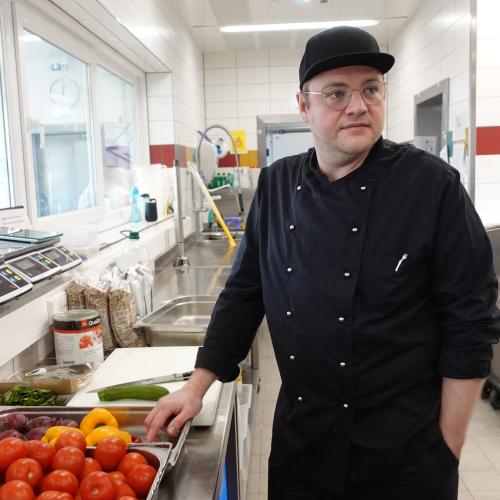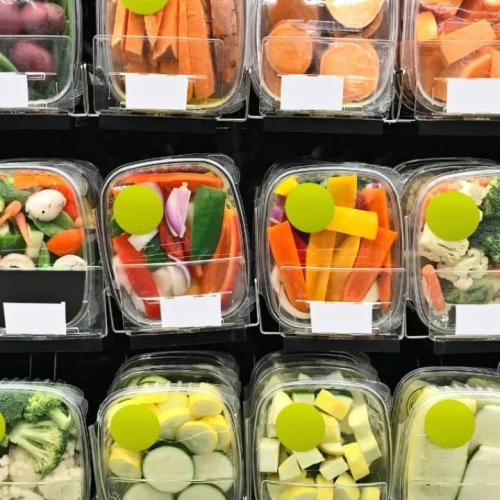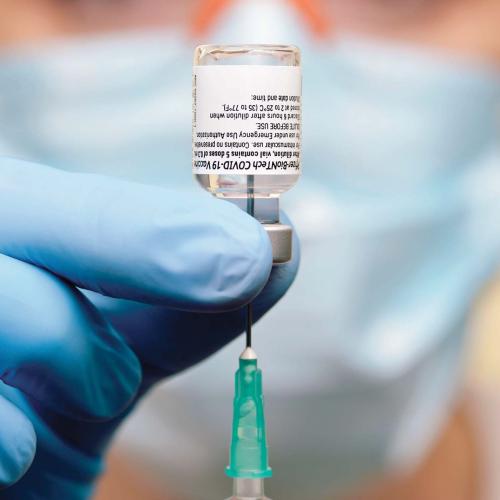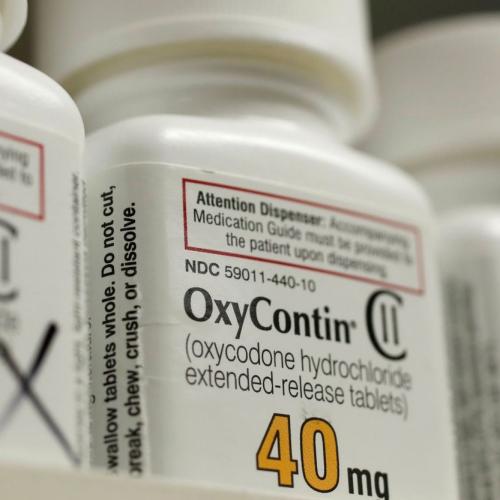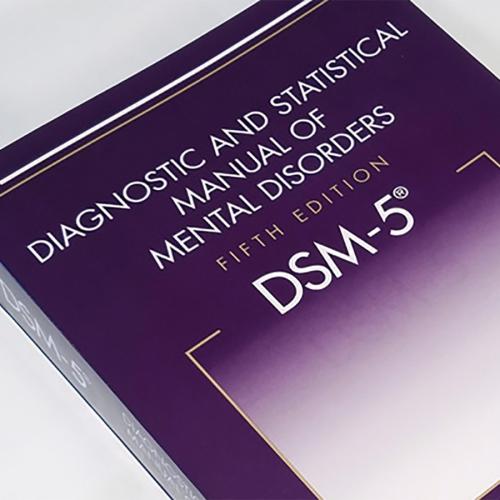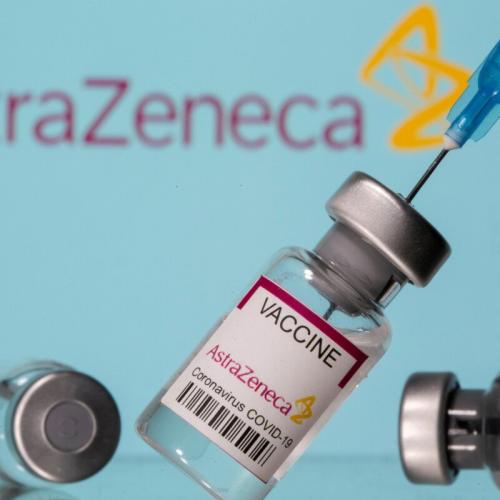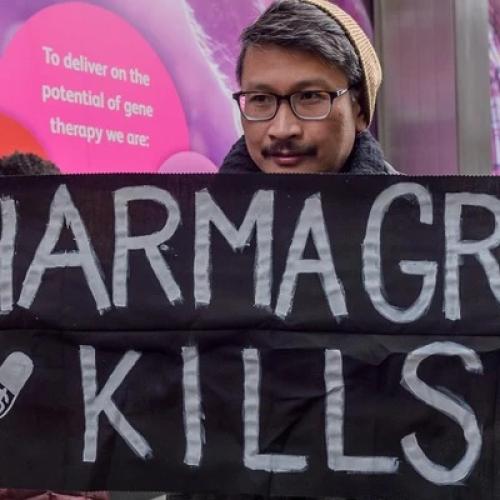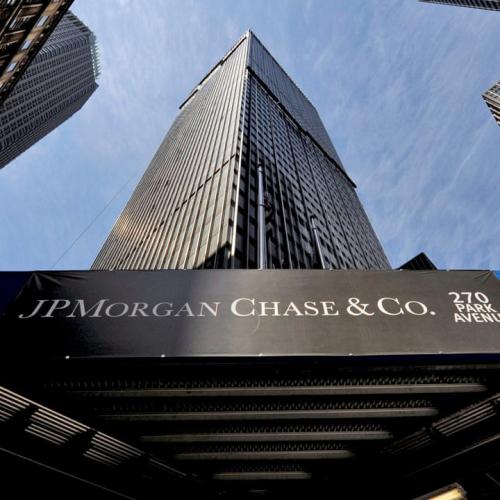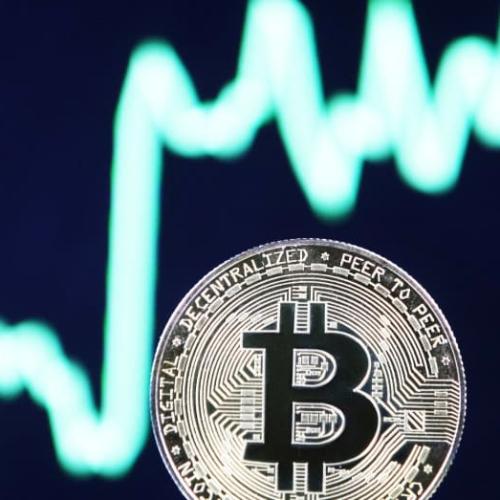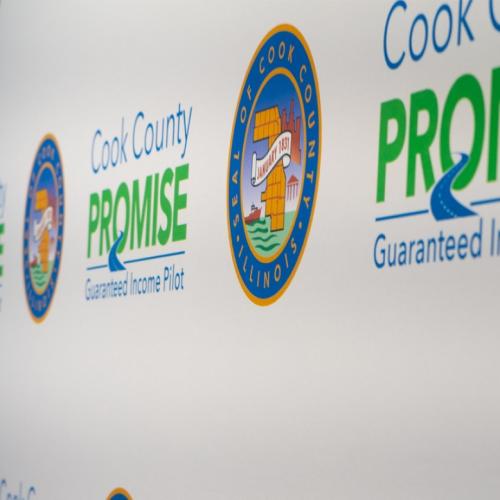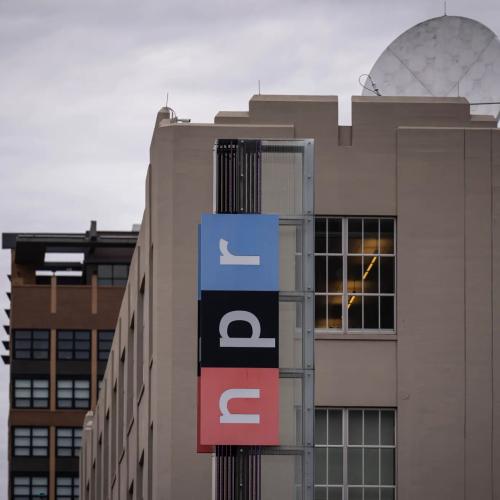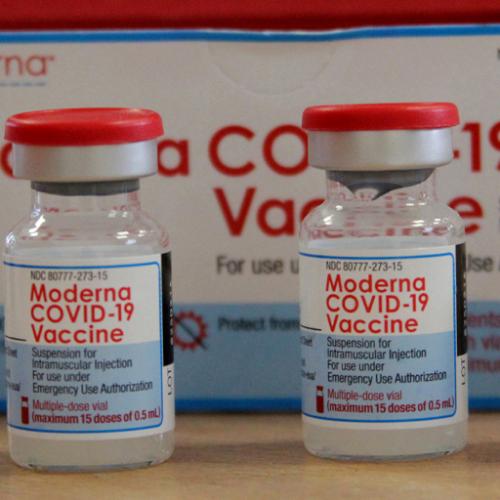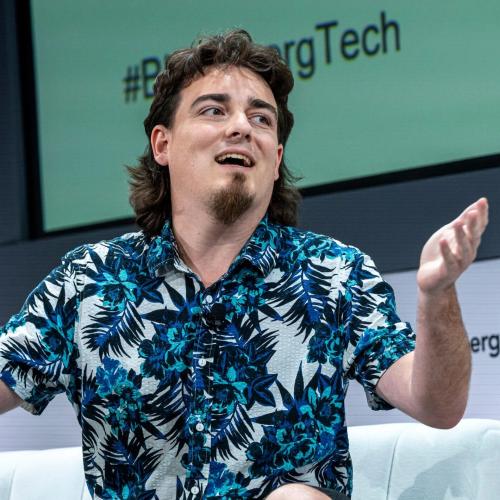Food Corruption News Articles
Below are key excerpts of revealing news articles on food system corruption from reliable news media sources. If any link fails to function, a paywall blocks full access, or the article is no longer available, try these digital tools.
For further exploration, delve into our comprehensive Health and Food Corruption Information Center.
A new EWG peer-reviewed study has found chlormequat, a little-known pesticide, in four out of five, or 80 percent, of people tested. The groundbreaking analysis of chlormequat in the bodies of people in the U.S. rings alarm bells, because the chemical is linked to reproductive and developmental problems in animal studies, suggesting the potential for similar harm to humans. EWG’s research, published February 15 in the Journal of Exposure Science and Environmental Epidemiology, tested for the presence of chlormequat in urine collected from 96 people between 2017 and 2023. The chemical was found in the urine of 77 of them. We detected the chemical in 92 percent of oat-based foods purchased in May 2023, including Quaker Oats and Cheerios. The fact that so many people are exposed raises concerns about its potential impact on public health, since animal studies link chlormequat to reduced fertility, harm to the reproductive system and altered fetal growth. Environmental Protection Agency regulations allow the chemical to be used on ornamental plants only – not food crops – grown in the U.S. But its use is permitted on imported oats and other foods sold here. Many oats and oat products consumed in the U.S. come from Canada. Chlormequat was not allowed on oats sold in the U.S. before 2018, when the Trump EPA gave first-time approval for some amount of the chemical on imported oats. The same administration in 2020 increased the allowable level.
Note: For more along these lines, see concise summaries of deeply revealing news articles on health and food system corruption from reliable major media sources.
Pesticides used in our homes, gardens and lawns and sprayed on foods we eat are contributing to a dramatic decline in sperm count among men worldwide, according to a new analysis of studies over the last 50 years. “Over the course of 50 years, sperm concentration has fallen about 50% around the world,” said senior study author Melissa Perry. “While there are likely many more contributing causes, our study demonstrates a strong association between two common insecticides —organophosphates and N-methyl carbamates — and the decline of sperm concentration.” Organophosphates are the main components of nerve gas, herbicides, pesticides and insecticides and are also used to create plastics and solvents. They are widely used in agriculture on the crops we eat. We use them in structural applications within homes and buildings. N-methyl carbamates are structurally and operationally similar to organophosphates, killing insects by damaging their brains and nervous systems. The study, published ... in the journal Environmental Health Perspectives, examined 25 studies around the world on the two chemicals. Those studies looked at 42 different levels of impact among 1,774 men in 21 different study populations. Men who were more highly exposed to the pesticides, such as those who work in agriculture, had significantly less sperm concentration than men who had the least exposure to organophosphates and N-methyl carbamates, the study found.
Note: For more along these lines, see concise summaries of deeply revealing news articles on health and food system corruption from reliable major media sources.
A federal appeals court on Thursday is tossing the Environmental Protection Agency’s (EPA) ban on a pesticide that has been linked to brain damage in children. The decision from the 8th Circuit Court of Appeals to send the rule back to the agency does not preclude the agency from reinstating the ban in the future. But it said the EPA needs to give greater consideration to whether there are cases where the pesticide, called chlorpyrifos, could be used safely. Chlorpyrifos has been used as an insecticide, protecting crops like soybeans, broccoli, cauliflower and fruit trees. The EPA banned chlorpyrifos for use in growing food in 2021. That came after a prior court ruling gave the agency just 60 days to either find a safe use for chlorpyrifos or ban it outright. The appeals court determined that this deadline contributed to a rushed decision from EPA that was ultimately “arbitrary and capricious.” The ruling comes from Judges Lavenski Smith, Raymond Gruender and David Stras, two of whom were appointed by former President George W. Bush and one of whom was appointed by former President Trump. The chlorpyrifos issue has ping-ponged between administrations. The Obama administration had proposed to ban its use on food, but the Trump administration reversed course and had proposed to allow some uses of the chemical.
Note: Did you know that chlorpyrifos was originally developed by Nazis during World War II for use as a nerve gas? Read more about the history and politics of chlorpyrifos, and how U.S. regulators relied on falsified data to allow its use for years. See other concise news articles we've summarized about the harms of chlorpyrifos.
America’s biggest “food forest” is just a short drive from the world’s busiest airport, Atlanta’s Hartsfield-Jackson. When the Guardian visits the Urban Food Forest at Browns Mill there are around a dozen volunteers working. Food forests are part of the broader food justice and urban agriculture movement and are distinct from community gardens in various ways. They are typically backed by grants rather than renting plots, usually rely on volunteers and incorporate a land management approach that has a focus on growing perennials. The schemes vary in how they operate in allocating food ... but they are all aimed at boosting food access. Organizers in Atlanta stress that they properly distribute the food to the neighborhoods that the food forest is intended to support and it’s not open to the public beyond volunteer workers. Other schemes have areas where the public is free to take what they want. Celeste Lomax, who manages community engagement at the Brown Mills forest and lives in the neighborhood, believes education is key to the forest’s success and beams like sunlight when sharing her vision for the fertile soil she tends. “We’re using this space for more than just growing food. We have composting, beehives, bat boxes, and this beautiful herb garden where we’re teaching people how to heal themselves with the foods we eat. We’ll be doing walkthrough retreats and outside yoga. This is a health and wellness place. It’s so much more than just free food.”
Note: Explore a treasure trove of concise summaries of incredibly inspiring news articles which will inspire you to make a difference.
The situation for India’s more than 260 million agricultural workers is dire. Nearly 30 people in the farming sector die by suicide daily, according to the most recent figures available, typically due to overwhelming debt. Indeed in 2020, more than 10,000 people in the agricultural sector ended their own lives, according to government data. India’s economic backbone – its farmers and their families – is in collapse. They face crushing pressures: insurmountable debt, environmental degradation, and extreme rates of cancer linked to exposure to pesticides. This strain is compounded by climate change and extreme weather – from ground water depletion to water shortages and crop damage due to rising temperatures – effects which have been tied to increasing suicides in India. Many are subsistence farmers who are drowning in the volatility caused by the Green Revolution which began in the 1960s as a way of industrializing the agriculture sector with high yielding seeds, mechanized tools and pesticides. In some cases, farmers cannot work their land due to illness linked to the revolution’s pesticides and fertilizers. They are dealing with deep-rooted battles against multinational corporations. And all the while having to take out loans each year to make the agricultural cycle possible. And then, when farmers are unable to get loans from legitimate banks, illegal moneylenders ... step in, charging exorbitant interest rates and creating an inescapable debt-trap for farmers, in some instances pushing them to suicide.
Note: Watch a compelling talk by food sovereignty advocate Vandana Shiva, who explains how the "Green Revolution" doesn't bring any gain in food security, and has done more harm than good in India. For more along these lines, see concise summaries of deeply revealing news articles on food system corruption from reliable major media sources.
Americans overwhelmingly support labeling foods that have been genetically modified or engineered, according to a New York Times poll conducted this year, with 93 percent of respondents saying that foods containing such ingredients should be identified. Three-quarters of Americans expressed concern about genetically modified organisms in their food, with most of them worried about the effects on peoples health. Thirty-seven percent of those worried about G.M.O.s said they feared that such foods cause cancer or allergies. Among those with concerns, 26 percent said these foods are not safe to eat, or are toxic, while 13 percent were worried about environmental problems that they fear might be caused by genetic engineering. Nearly half of Americans said they were aware that a large amount of the processed or packaged foods they now buy at the grocery store contains genetically modified ingredients. Overall concern was higher among women than men, perhaps not surprisingly, as more women identify themselves as the principal grocery shopper in the household. Americans were almost equally divided about eating genetically modified vegetables, fruits and grains, with about half saying they would not eat them. They were even less comfortable about eating meat from genetically engineered animals: three-quarters said they would not eat G.M.O. fish, and about two-thirds said they would not eat meat that had been modified.
Note: Explore over 40 scientific studies that have demonstrated the health dangers of GM foods. Despite overwhelming public support for labelling of GMOs, the GM lobby has spent huge amounts of money to keep US states from enacting labelling laws. Sadly, they have largely been successful. For more along these lines, see concise summaries of deeply revealing GMO news articles from reliable major media sources.
French scientists said on [September 19] that rats fed on Monsanto's genetically modified corn or exposed to its top-selling weedkiller suffered tumors and multiple organ damage. Gilles-Eric Seralini of the University of Caen and colleagues said rats fed on a diet containing NK603 - a seed variety made tolerant to dousings of Monsanto's Roundup weedkiller - or given water with Roundup at levels permitted in the United States, died earlier than those on a standard diet. The animals on the GM diet suffered mammary tumors, as well as severe liver and kidney damage. The study was published in the peer-reviewed journal Food and Chemical Toxicology and presented at a news conference in London. The researchers said 50 percent of males and 70 percent of females died prematurely, compared with only 30 percent and 20 percent in the control group. GMOs are deeply unpopular in Europe and many other countries, but dominate key crops in the United States after Monsanto in 1996 introduced a soybean genetically altered to tolerate Monsanto's Roundup weed killer. Seralini was part of a team that has voiced previous safety concerns based on a shorter rat study in a scientific paper published in 2009. This new study takes things a step further by tracking the animals throughout their two-year lifespan. Seralini believes his latest lifetime rat tests give a more realistic and authoritative view of risks than the 90-day feeding trials that form the basis of GM crop approvals, since three months is only the equivalent of early adulthood in rats.
Note: For alarming photos and more from the above long-term study on the dangers of GM food, click here. For an incisive, powerful 13-minute video revealing the disturbing results of this first long-term scientific study on GMOs, click here. For an excellent article and a great two-minute video clearly explaining the major dangers of GM food, click here. For a powerful summary of the health risks from GM foods, click here.
There is more than a casual association between GM [Genetically Modified] foods and adverse health effects. There is causation [as] confirmed in several animal studies. Specificity of the association of GM foods and specific disease processes is also supported. In spite of this risk, the biotechnology industry claims that GM foods can feed the world through production of higher crop yields. However, a recent report by the Union of Concerned Scientists reviewed 12 academic studies and indicates otherwise: "The several thousand field trials over the last 20 years ... indicate a significant undertaking. Yet none of these field trials have resulted in increased yield ... with the exception of Bt corn." Therefore, because GM foods pose a serious health risk in the areas of toxicology, allergy and immune function, reproductive health, and metabolic, physiologic and genetic health and are without benefit, ... because GM foods have not been properly tested for human consumption, and because there is ample evidence of probable harm, the AAEM asks: [1] Physicians to educate their patients, the medical community, and the public to avoid GM foods when possible and provide educational materials concerning GM foods and health risks. [2] Physicians to consider the possible role of GM foods in the disease process. [3] Our members, the medical community, and the independent scientific community to gather case studies potentially related to GM food consumption and health effects. [4] For a moratorium on GM food, implementation of immediate long term independent safety testing, and labeling of GM foods, which is necessary for the health and safety of consumers.
Note: Why was this not reported in the mainstream media? A top academy of physicians states our health is being endangered by GM foods, yet no one is reporting this. For how our media is bought off in matters like this, click here. For a powerful essay showing blatant corruption of the science around GMOs and FDA complicity, click here. For key media articles on this vital topic, click here.
In late 1986, four executives of the Monsanto Company, the leader in agricultural biotechnology, paid a visit to Vice President George Bush at the White House. In the weeks and months that followed, the White House complied, working behind the scenes, to help Monsanto long a political power with deep connections in Washington get the regulations that it wanted. It was an outcome that would be repeated, again and again, through three administrations. What Monsanto wished for from Washington, Monsanto and, by extension, the biotechnology industry got. Even longtime Washington hands said that the control this nascent industry exerted over its own regulatory destiny through the Environmental Protection Agency, the Agriculture Department and ultimately the Food and Drug Administration was astonishing. Dr. Louis J. Pribyl, one of 17 government scientists working on a policy for genetically engineered food, ... knew from studies that toxins could be unintentionally created when new genes were introduced into a plant's cells. The government was dismissing that risk and any other possible risk as no different from those of conventionally derived food. That meant biotechnology companies would not need government approval to sell the foods they were developing. "This is the industry's pet idea, namely that there are no unintended effects that will raise the F.D.A.'s level of concern," Dr. Pribyl wrote in a fiery memo to the F.D.A. scientist overseeing the policy's development. "But time and time again, there is no data to back up their contention."
Note: For a powerful essay showing the grave risks and dangers of GMOs, click here. Explore over 40 scientific studies that have demonstrated the health dangers of GM foods. For deeply revealing reports from reliable major media sources on genetically modified foods, click here.
Nearly 40% of conventional baby food products analyzed in a new US study were found to contain toxic pesticides, while none of the organic products sampled in the survey contained the chemicals. The research, conducted by the Environmental Working Group (EWG) non-profit, looked at 73 products and found at least one pesticide in 22 of them. Many products showed more than one pesticide, and the substances present a dangerous health threat. “Babies and young children are particularly vulnerable to the health risks posed by pesticides in food,” said Sydney Evans, a senior science analyst at EWG. The study looked at products from Beech-Nut, Gerber and Parent’s Choice, though it did not specifically identify which of the companies’ products contained pesticide residue. Among pesticides it detected were acetamiprid, a neonicotinoid insecticide that harms bees and humans, and captan, which is linked to cancer. Fludioxonil, a product commonly used on fruits, vegetables and cereals, was found in five products and is thought to harm fetal development, cause changes in immune system cells and disrupt hormones. Apple-based products were the most likely to contain high levels of pesticide residue, and blueberries, pears and strawberries are also among produce that commonly hold high levels of the chemicals. The best way to avoid pesticides is to buy organic baby food products, which are subjected to much stricter regulations.
Note: For more along these lines, see concise summaries of deeply revealing news articles on health and food system corruption from reliable major media sources.
Unmarked trucks packed with prison-raised cattle roll out of the Louisiana State Penitentiary, where men are sentenced to hard labor and forced to work, for pennies an hour or sometimes nothing at all. They are among America’s most vulnerable laborers. If they refuse to work, some can jeopardize their chances of parole or face punishment like being sent to solitary confinement. The goods ... prisoners produce wind up in the supply chains of a dizzying array of products found in most American kitchens, from Frosted Flakes cereal and Ball Park hot dogs to Gold Medal flour, Coca-Cola and Riceland rice. They are on the shelves of virtually every supermarket in the country, including Kroger, Target, Aldi and Whole Foods. It’s completely legal. Enshrined in the Constitution by the 13th Amendment, slavery and involuntary servitude are banned – except as punishment for a crime. With about 2 million people locked up, U.S. prison labor from all sectors has morphed into a multibillion-dollar empire. Almost all of the country’s state and federal adult prisons have some sort of work program, employing around 800,000 people. Altogether, labor tied specifically to goods and services produced through state prison industries brought in more than $2 billion in 2021. “Slavery has not been abolished,” said Curtis Davis, who spent more than 25 years at [Louisiana's Angola] penitentiary. “It is still operating in present tense,” he said. “Nothing has changed.”
Note: For more along these lines, see concise summaries of deeply revealing news articles on corruption in prisons and in the food system from reliable major media sources.
There’s a hidden ingredient used as a whitener in an array of foods. It’s called titanium dioxide, and while commonly used in the US, it’s being banned in the EU as a possible carcinogen. The additive, also known as E171, joins a host of other chemicals that are banned in foods in the European Union but allowed in the US. These include Azodicarbonamide, a whitening agent found in food such as breads, bagels, pizza, and pastries in the US, which has been banned in the EU for more than a decade. The additive has been linked to asthma and respiratory issues in exposed workers and, when baked, to cancer in mice studies. The Food and Drug Administration classifies these food chemicals, and many others prohibited by the EU, as “generally recognized as safe”. Chemical safety processes in the EU and US work in starkly different ways. Where European policy tends to take a precautionary approach – trying to prevent harm before it happens – the US is usually more reactive. And while the EU has consistently updated its methods and processes for evaluating new chemicals, some experts say the US system, set up more than half a century ago, needs updating. In the case of additives like titanium dioxide, manufacturers petition the FDA for its approval by submitting evidence that the substance is safe for its intended use. The FDA evaluates the application, and will authorize the additive if it concludes the data provided demonstrates that the substance is safe to use.
Note: Unlike other countries, the U.S. is known to raise objections to the regulation of toxic chemicals in our food, with its regulatory agencies having deep financial ties to powerful food and agrichemical industries. For more along these lines, see concise summaries of deeply revealing news articles on food system corruption from reliable major media sources.
A new peer-reviewed study shows that eating a completely organic diet - even for just one week - can dramatically reduce the presence of pesticide levels in people, a finding that was characterized as "groundbreaking" by critics of an industrial food system that relies heavily on synthetic toxins and chemicals to grow crops and raise livestock. The study ... found that switching to an organic diet significantly reduced the levels of synthetic pesticides found in all participants. "This study shows that organic works," said study co-author Kendra Klein, PhD. The study tested the urine of four diverse American families ... after eating their typical diet of conventional food for six days and then after a controlled diet of all organic food for six days. The pesticide and pesticide metabolite levels detected in participants dropped by an average 60.5 percent after just six days of eating the all-organic diet. Specifically, the testing showed significant reductions in pesticides associated in the past with increased risk of autism, cancers, autoimmune disorders, infertility, hormone disruption, Alzheimer's, and Parkinson's disease. "This important study shows how quickly we can rid our bodies of toxic pesticides by choosing organic," said [study co-author] Sharyle Patton. "Congratulations to the families who participated in the study and their willingness to tell their stories in support of creating a food system where organic is available to all."
Note: Watch an engaging video on this study at the link above. Explore a treasure trove of concise summaries of incredibly inspiring news articles which will inspire you to make a difference.
Geoengineering is a technological fix that leaves the economic and industrial system causing climate change untouched. The mindset behind geoengineering stands in sharp contrast to an emerging ecological, systems approach taking shape in the form of regenerative agriculture. More than a mere alternative strategy, regenerative agriculture represents a fundamental shift in our culture’s relationship to nature. Regenerative agriculture comprises an array of techniques that rebuild soil and, in the process, sequester carbon. Typically, it uses cover crops and perennials so that bare soil is never exposed, and grazes animals in ways that mimic animals in nature. It also offers ecological benefits far beyond carbon storage: it stops soil erosion, remineralises soil, protects the purity of groundwater and reduces damaging pesticide and fertiliser runoff. Yields from regenerative methods often exceed conventional yields. Likewise, since these methods build soil, crowd out weeds and retain moisture, fertiliser and herbicide inputs can be reduced or eliminated entirely, resulting in higher profits for farmers. No-till methods can sequester as much as a ton of carbon per acre annually. In the US alone, that could amount to nearly a quarter of current emissions. Ultimately, climate change challenges us to rethink our long-standing separation from nature. It is time to fall in love with the land, the soil, and the trees, to halt their destruction and to serve their restoration.
Note: Don't miss Kiss the Ground, a powerful documentary on the growing regenerative agriculture movement and its power to build global community, reverse the many environmental crises we face, and revive our connection to the natural world. Explore more positive stories like this in our comprehensive inspiring news articles archive focused on solutions and bridging divides.
The solution to stopping climate change might be buried on 10 acres in the Pauma Valley of California. “The idea is not just to produce food but to improve the soil,” says Alvarez, Solidarity Farm’s Climate Resilience Specialist. “We stopped using the plow to turn the soil, and we do a lot of composting and mulching to improve our soil health.” Solidarity Farm had used organic principles in the 10 years since its inception, but it pivoted to carbon farming after the extreme heat in the summer of 2017. Carbon farmers cultivate plants and trees in a way that maximizes carbon sequestration in the soil. Among the most important practices for carbon farmers are minimizing soil erosion by planting perennials and ground cover, which also lowers soil temperatures, and only working the land by hand or with low-tech solutions. “The soil has the capacity to store more carbon than all plants on the planet together,” Alvarez says. Solidarity Farms produces a diverse range of about 60 different fruits and vegetables, at least 70 percent of them perennial crops such as plums and pomegranates. Stacks of organic chicken manure in front of the vegetable beds wait to be distributed. The farmers enrich the soil with compost and mulch, while deterring pests with diverse crop rotation. According to soil tests, the Solidarity farmers have tripled the amount of carbon in the ground since 2018. “This equates to a drawdown of nearly 600 metric tons of CO2 per year, offsetting the emissions of 80 American households,” Alvarez says.
Note: Have you seen the groundbreaking and inspiring movie Kiss the Ground? In a time where we're told hopeless and divisive narratives about our current environmental challenges, people all over the world are reversing the damage from destroyed ecosystems, regenerating the world's soils, and creating abundant food supplies. Don't miss this powerful film on the growing regenerative agriculture movement and its power to revive global community and our connection to the natural world.
A handful of powerful companies control the majority market share of almost 80% of dozens of grocery items bought regularly by ordinary Americans, new analysis reveals. A joint investigation by the Guardian and Food and Water Watch found that consumer choice is largely an illusion – despite supermarket shelves and fridges brimming with different brands. In fact, a few powerful transnational companies dominate every link of the food supply chain: from seeds and fertilizers to slaughterhouses and supermarkets to cereals and beers. The size, power and profits of these mega companies have expanded thanks to political lobbying and weak regulation which enabled a wave of unchecked mergers and acquisitions. The size and influence of these mega-companies enables them to largely dictate what America’s 2 million farmers grow and how much they are paid, as well as what consumers eat and how much our groceries cost. It also means those who harvest, pack and sell us our food have the least power: at least half of the 10 lowest-paid jobs are in the food industry. Farms and meat processing plants are among the most dangerous and exploitative workplaces in the country. Overall, only 15 cents of every dollar we spend in the supermarket goes to farmers. The rest goes to processing and marketing our food. Less competition among agribusinesses means higher prices and fewer choices for consumers. Just four companies – Walmart, Costco, Kroger and Ahold Delhaize – control 65% of the retail market.
Note: For more along these lines, see concise summaries of deeply revealing news articles on food system corruption from reliable major media sources.
In October 1995 ... the Scottish Office commissioned a research project from the Aberdeen-based Rowett Research Institute into the effect of GM crops on animal nutrition and the environment. This included, for the first time, feeding GM potatoes to rats to see if they had any harmful effects on their guts, bodies, metabolism and health. A former senior Scottish Office official involved in commissioning the project told the Guardian there was "little regard" at the time for research into the human nutritional and environmental consequences of GM foods. Dr Arpad Pusztai, a senior research scientist at the Rowett, beat off 28 other tenders to coordinate the project. The preliminary results of Dr Pusztai's work had begun to show unexpected and worrying changes in the size and weight of the rats' bodily organs. The team found liver and heart sizes were decreasing. Worse still, the brain was getting smaller. There were also indications of a weakening of the immune system. Granada TV's World in Action approached Dr Pusztai and ... with the institute's consent he gave an interview. Dr Pusztai told ITV viewers that he would not eat GM food. He found it "very, very unfair to use our fellow citizens as guinea pigs. We have to find [the results] in the laboratory," he insisted. Two days later Dr Pusztai was summarily suspended and forced to retire by the Rowett Institute's director, Professor Philip James, who had personally cleared the interview with Granada.
Note: For more along these lines, see concise summaries of deeply revealing news articles on GMOs from reliable major media sources.
California has become the first U.S. state to outlaw the use of four potentially harmful food and drink additives that have been linked to an array of diseases, including cancer, and are already banned in dozens of countries. The California Food Safety Act prohibits the manufacturing, distribution and sale of food and beverages that contain brominated vegetable oil, potassium bromate, propylparaben and red dye 3 — which can be found in candy, fruit juices, cookies and more. The Food and Drug Administration banned the use of red dye 3 in cosmetics in 1990 after evidence showed it caused cancer in lab animals. But the government hasn't prohibited its use in food, and it's an ingredient in candies. Brominated vegetable oil and potassium bromate have also been associated with harmful effects on the respiratory and nervous systems, while propylparaben may negatively impact reproductive health. The proposal has been the target of a false claim that California is attempting to ban Skittles. In fact, Assemblymember Jesse Gabriel, a Democrat who sponsored the bill, has said that Skittles are sold with alternative ingredients in the European Union, where the four additives are already banned. "It's unacceptable that the U.S. is so far behind the rest of the world when it comes to food safety," Gabriel said in a statement. In addition to the EU, countries that have banned the four additives in food include the United Kingdom, Canada, Australia, New Zealand, China and Japan.
Note: Explore more positive stories like this in our comprehensive inspiring news articles archive focused on solutions and bridging divides.
A new peer-reviewed study released by a group of scientists in Taiwan has revealed an astonishingly strong link between severe depression, cognitive decline and exposure to the world’s most used herbicide, glyphosate. The study was fully published on Aug. 22 in the highly respected Elsevier Journal, Environmental Research. It was met with silence by the manufacturers of glyphosate-based herbicides such as Bayer/Monsanto, who produce the infamous weedkiller Roundup. The study authors stated that they: “Conducted analyses on existing data collected from 1532 adults of the 2013–2014 U.S. National Health and Nutrition Examination Survey (NHANES) to explore the possible relationship between glyphosate exposure and cognitive function, depressive symptoms, disability, and neurological medical conditions.” The proportion of individuals with detectable levels of glyphosate was 80.4%. The scientists concluded: “Our study provides important evidence of an association between urinary glyphosate levels and adverse neurological outcomes in a representative cohort of U.S. adult population. “Specifically, we observed lower cognitive function scores, greater odds of severe depressive symptoms, and increased risk of serious hearing difficulty in individuals with higher glyphosate exposure.” Some other recent independent studies ... suggest that both glyphosate alone and glyphosate-based herbicides such as Roundup are neurotoxins.
Note: A 2019 study found that glyphosate increases cancer risk by 41%. For more along these lines, see concise summaries of deeply revealing news articles on food system corruption and health from reliable major media sources.
For almost five decades, [Dr. Vandana] Shiva has been deeply engaged in the fight for environmental justice in India. Regarded as one of the world's most formidable environmentalists, she has worked to save forests, shut down polluting mines, exposed the dangers of pesticides, spurred on the global campaign for organic farming, championed ecofeminism and gone up against powerful giant chemical corporations. Her battle to protect the world's seeds in their natural form – rather than genetically altered and commercially controlled versions – continues to be her life's work. "I couldn't understand why were we told that new technology brings progress, but everywhere I looked, local people were getting poorer and landscapes were being devastated as soon as this development or new technology came in," she says. "No one was stopping to ask: what will be the impact on the environment? What will this cost the farmers? They only wanted to win the race and control all the world's seeds." Currently more than 60% of the world's' commercial seeds are sold by just four companies, which have led the push to patent seeds, orchestrated a global monopoly of certain [genetically modified] crops such as cotton and soya and sued hundreds of small-scale farmers for saving seeds from commercial crops. Shiva considers her most important work to be her travels through India's villages, collecting and saving seeds ... setting up more than 100 seed banks, and helping farmers return to organic methods.
Note: The Seeds of Vandana Shiva is an excellent documentary that reveals the remarkable life story of Dr. Shiva, her significant influence in creating an international food justice movement, and how she stood up to the big players of industrial agriculture. For more along these lines, see concise summaries of deeply revealing news articles on GMOs and food system corruption from reliable major media sources.
Important Note: Explore our full index to revealing excerpts of key major media news articles on several dozen engaging topics. And don't miss amazing excerpts from 20 of the most revealing news articles ever published.







